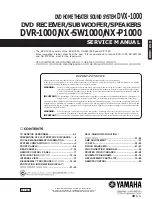
17
FUNCTIONS AVAILABLE FOR AIR TREATMENT
-
Exchange
: Air exchange with the corresponding flow rate, using the heat recuperator;
-
Cooling
: Displayed when summer is selected; the dehumidification cooling compressor is
turned ON and the delivery temperature will be the same provided for the cooling
integration settings. Cooling can also be provided with chilled water only and the
compressor off.
-
Heating
: Displayed instead of cooling when winter is selected; the delivery temperature,
obtained through the water-supplied coil, is the one provided for heating integration. The
inflow air temperature is set by a valve modulating the coil water flow.
-
Dehumidification:
The cooling compressor is activated for dehumidification and the
delivery temperature will be the same provided for neutral air operation;
-
Free-cooling
: Air exchange with the same flow rate of free-cooling without using the heat
recuperator. In addition to the digital input signal, the free-cooling function requires an
external temperature within the technical setting limits.
-
Attenuation:
The unit works with the same flow rates of attenuation set by default on
lower values compared to normal operation to reduce noise. This function is convenient if
the user wants the unit to work during resting times
DIGITAL INPUTS
-
COM: terminal shared by all inlets;
-
DI01: season, 1 = summer, 0 = winter, when the season is set through a digital input
instead of a key pad;
-
DI02: room fan activation input; this is not an operational mode but enables to keep the
room air flowing;
-
DI03: exchange input;
-
DI04: dehumidification input;
-
DI05: cooling input in SUMMER o heating in WINTER;
-
DI06: exchange stop, it enables to stop an exchange set with DI03 or time slots. This
input, when connected through DI03 to a 3-position selector, type 0-1-2, provides 3
operation options: exchange ON, exchange OFF, AUTOMATIC exchange through time
slots.
-
DI07: free-cooling input signal (when the external temperature is within the setting range);
-
DI08: flow rate attenuation input signal; this enables to reduce the air flow rates based on
the technical settings without changing the functions active in a specific moment. This
input is useful to prioritize the reduction of aerial noise versus HVAC performance, for
example at night.
















































